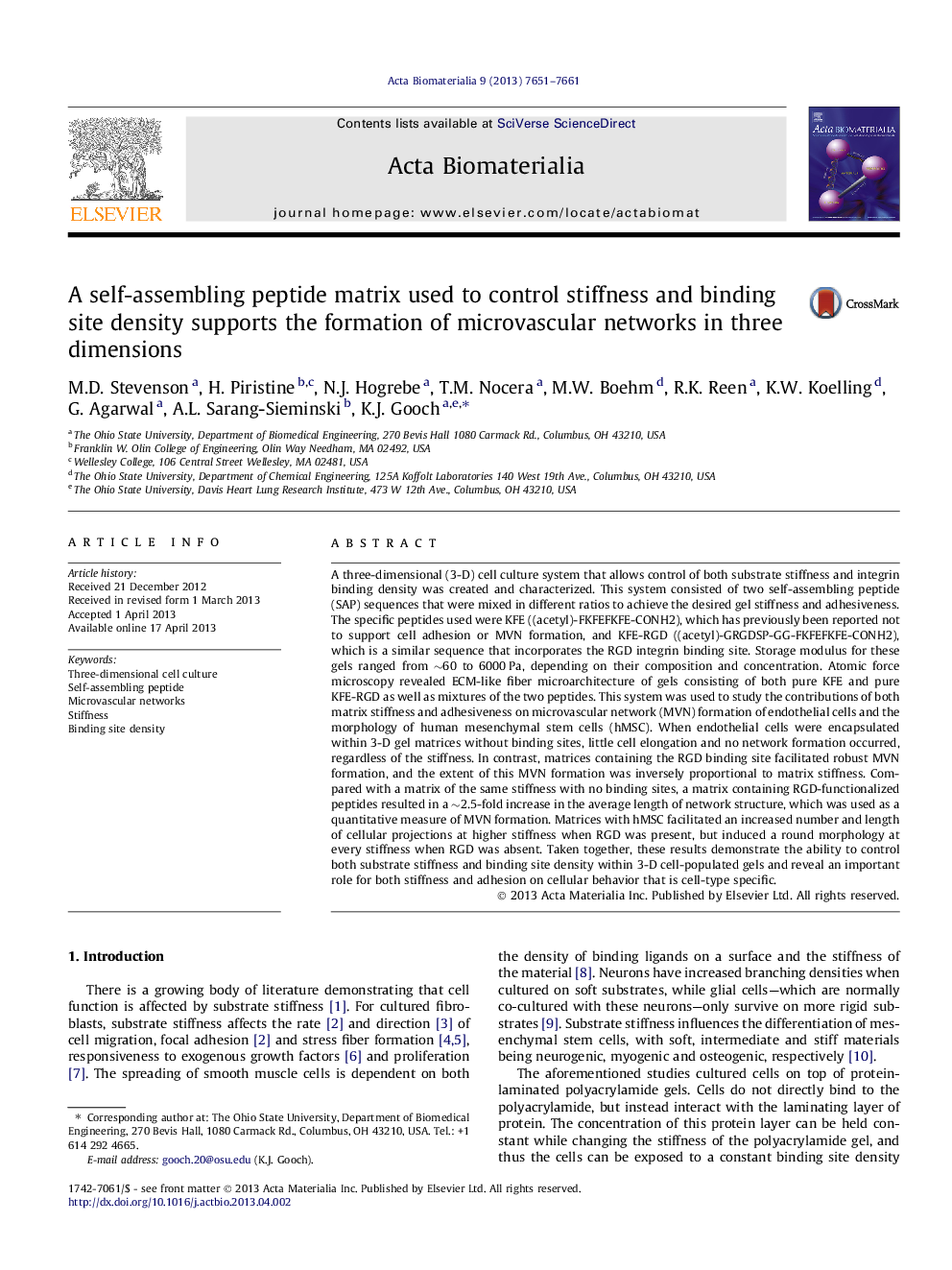| کد مقاله | کد نشریه | سال انتشار | مقاله انگلیسی | نسخه تمام متن |
|---|---|---|---|---|
| 10159587 | 54 | 2013 | 11 صفحه PDF | دانلود رایگان |
عنوان انگلیسی مقاله ISI
A self-assembling peptide matrix used to control stiffness and binding site density supports the formation of microvascular networks in three dimensions
ترجمه فارسی عنوان
ماتریس پپتیدهای خودآموزی که برای کنترل سختی و چگالی محل اتصال استفاده می شود، از تشکیل شبکه های میکروکوزالی در سه بعد پشتیبانی می کند
دانلود مقاله + سفارش ترجمه
دانلود مقاله ISI انگلیسی
رایگان برای ایرانیان
کلمات کلیدی
موضوعات مرتبط
مهندسی و علوم پایه
مهندسی شیمی
بیو مهندسی (مهندسی زیستی)
چکیده انگلیسی
A three-dimensional (3-D) cell culture system that allows control of both substrate stiffness and integrin binding density was created and characterized. This system consisted of two self-assembling peptide (SAP) sequences that were mixed in different ratios to achieve the desired gel stiffness and adhesiveness. The specific peptides used were KFE ((acetyl)-FKFEFKFE-CONH2), which has previously been reported not to support cell adhesion or MVN formation, and KFE-RGD ((acetyl)-GRGDSP-GG-FKFEFKFE-CONH2), which is a similar sequence that incorporates the RGD integrin binding site. Storage modulus for these gels ranged from â¼60 to 6000Â Pa, depending on their composition and concentration. Atomic force microscopy revealed ECM-like fiber microarchitecture of gels consisting of both pure KFE and pure KFE-RGD as well as mixtures of the two peptides. This system was used to study the contributions of both matrix stiffness and adhesiveness on microvascular network (MVN) formation of endothelial cells and the morphology of human mesenchymal stem cells (hMSC). When endothelial cells were encapsulated within 3-D gel matrices without binding sites, little cell elongation and no network formation occurred, regardless of the stiffness. In contrast, matrices containing the RGD binding site facilitated robust MVN formation, and the extent of this MVN formation was inversely proportional to matrix stiffness. Compared with a matrix of the same stiffness with no binding sites, a matrix containing RGD-functionalized peptides resulted in a â¼2.5-fold increase in the average length of network structure, which was used as a quantitative measure of MVN formation. Matrices with hMSC facilitated an increased number and length of cellular projections at higher stiffness when RGD was present, but induced a round morphology at every stiffness when RGD was absent. Taken together, these results demonstrate the ability to control both substrate stiffness and binding site density within 3-D cell-populated gels and reveal an important role for both stiffness and adhesion on cellular behavior that is cell-type specific.
ناشر
Database: Elsevier - ScienceDirect (ساینس دایرکت)
Journal: Acta Biomaterialia - Volume 9, Issue 8, August 2013, Pages 7651-7661
Journal: Acta Biomaterialia - Volume 9, Issue 8, August 2013, Pages 7651-7661
نویسندگان
M.D. Stevenson, H. Piristine, N.J. Hogrebe, T.M. Nocera, M.W. Boehm, R.K. Reen, K.W. Koelling, G. Agarwal, A.L. Sarang-Sieminski, K.J. Gooch,
